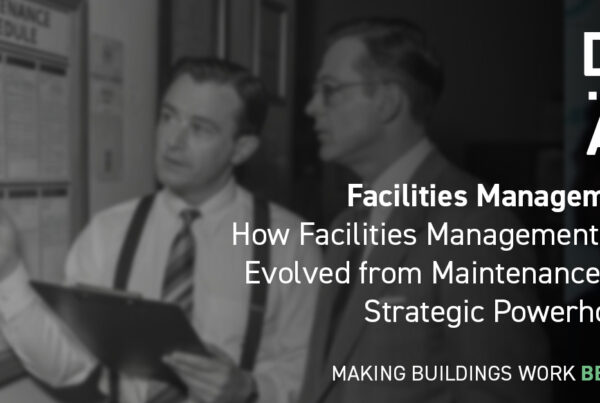
How trusts can use the New Hospital Programme (NHP) reset to cut carbon, reduce costs and move towards carbon-neutral hospitals.
What Is The New Hospital Programme (NHP)?
The NHS is reshaping how hospitals are planned and built, in the face of a two-fold challenge: a pressing need for new, safe hospital infrastructure, and an equally urgent requirement to cut carbon and costs.
Drawing on over 30 years’ experience with NHS estates, we outline what’s changed and how estate teams can use the revised NHP as a framework to upgrade, decarbonise and de-risk their sites.
Why Was The New Hospital Programme Created?
In the past, trusts commissioned hospitals individually, but many projects were often late and over budget. Originally launched in 2020, the New Hospital Programme (NHP), which held the promise of 40 new hospitals by 2030, soon ran into difficulty. The goal was to standardise design, cut costs and speed up delivery, but funding was only confirmed up to 2025 and many of the schemes turned out to be refurbishments or extensions rather than true new builds. By 2024 it was clear the programme was not deliverable as originally planned.
What did the 2024-25 review change?
With the programme clearly unfunded beyond March 2025 and years behind schedule, a government review in 2024-25 has now reset the NHP model. It confirms a commitment to the delivery of all original schemes in the programme, prioritising the seven reinforced autoclaved aerated concrete (RAAC) hospitals due to their substantive safety risks.
The new NHP will be delivered with rolling five-year waves of investment, worth £15 billion each – creating a sustainable, credible model.
How will the New Hospital Programme be delivered?
The plan will be delivered in five ‘waves’, with set hospital schemes beginning main construction in their given wave. You can find the full list, here.
Schemes not yet in a construction wave can still move forward with enabling works – such as business case development, planning, grid upgrades, energy centres, multi-storey car parks (MSCPs) and site demolition – so they are ready to go when their wave begins.
As a matter of urgency, seven hospitals built primarily with RAAC, a lightweight material used in construction between the 1950s and 1990s, are being rebuilt. RAAC creates structural deficiencies, weakening over time and causing serious safety risks. Mitigation works are also being carried out in parallel to keep patients and staff safe until full replacements are delivered.
Does It Still Mean 40 New Hospitals by 2030?
No – the reset now covers around 71 hospitals, including the 40 ‘new’ ones, with delivery phrased across the waves rather than by 2030, creating a more credible timeline and reducing stop-start risk.
What is ‘Hospital 2.0?’
Hospital 2.0 is the NHP’s standardised design and delivery approach. Co-designed with clinicians and estates teams, it uses modern methods of construction, design for manufacture and assembly, and sustainable specifications to:
- Accelerate build times
- Improve quality
- Support digital and low carbon operation
This approach aims to capture lessons from earlier waves to continuously improve.
How Is Industry Being Engaged?
The reset offers the construction sector the opportunity for long-term pipeline certainty. Instead of bidding for one-off projects, suppliers can commit capacity to a programme of hospitals over many years, supported by standardised designs and multi-scheme frameworks. This sustains skills, encourages investment and strengthens delivery confidence – providing work for years to come.
Where Do Existing Hospitals Fit In?
Only a small cohort will enter main construction early on, as many hospitals are re-builds on existing sites. Most trusts won’t break ground immediately, but there are still important steps they can take now:
- Advance enabling works such as planning, grid capacity upgrades, new energy centres, MSCPs and demolition, so sites are shovel-ready when their wave begins.
- Deliver targeted upgrades that cut carbon, reduce running costs and improve resilience – measures that align with and strengthen future NHP schemes
Exemplar For Modern Health Care
DMA’s partnership with Rye, Winchelsea & District Memorial Hospital shows what’s possible when trusts take a whole-estate, future-ready approach. Together, we created the UK’s first carbon-neutral community hospital.
The results speak for themselves: 40% less energy use, 260 tonnes of CO₂ saved every year, and cost savings reinvested into a lifecycle plan.
The lesson is clear: every trust can act now. By embedding decarbonisation, efficiency and resilience into upgrade projects today, estate teams can cut costs, reduce risk and safeguard patient care for the long term. Our Energy & Sustainability Services provide the expertise, technology and delivery needed to replicate Rye’s success, helping hospitals move towards carbon neutrality while strengthening their estates.
DMA’s Steps For Hospital Upgrades
Step 1: Energy Audit
Start with a whole-estate energy audit. Establish a clear kWh and carbon baseline; map Energy Conservation Methods (ECMs) by payback, risk and clinical impact. Aim for a staged, fundable roadmap.
Step 2: Implement ECM Recommendations
Following an energy audit, implement recommended ECMs to upgrade the hospital’s energy profile. The scope of activities undertaken at Rye included:
- LED Lighting: Replacing traditional lighting with energy-efficient LED lights throughout. Implement automatic controls on all internal and external LED lighting to prevent energy waste.
- Pumps and fan motors: Upgrades to high-efficiency models and replace radiator valves to optimise ventilation systems, water circulation systems and reduce energy consumption.
- Building Management System (BMS): Installation of a modern BMS and electrical sub-metering for precise monitoring and control of energy usage, optimising HVAC and other building systems, ensuring consistency and comfort is maintained. Use data-driven decision-making to de-risk operations and strengthen future business cases.
- Solar PV installation: Generating and storing on site by installing Solar PV paired with battery storage to reduce grid dependency and resilience through outages.
- Electrify heat and process loads: Reducing carbon emissions by replacing outdated gas boilers with electric flow boilers, remove gas-fired kitchen equipment opting for energy efficiency electric alternatives.
- Improve working environment and hygiene: Addressing water quality (dosing / boosting) and critical cooling for communications and medicine rooms improve comfortable working conditions and to reduce infection and equipment failure risks.
- Protect clinical operations: Phasing works to limit disruption during upgrade projects – use temporary services where necessary and choose interventions (e.g., blinds, local AC) that improve comfort without disruption.
- Reinvest savings: Using operational savings to fund a 5-year lifecycle and maintenance plan to keep assets efficient and compliant.
- Measure, verify, repeat: Monitoring energy, carbon and costs monthly. Validate results, publish successes and feed lessons learned into the next stage.
The New Hospital Programme is a long-term programme built on rolling investment, standardised designs and a credible funding model. But trusts don’t need to wait for their wave to start. By acting now, estates teams can cut costs, reduce carbon and safeguard patient care.
Rye Hospital cut energy use by 40% and saved 260 tonnes of CO₂ every year. Explore our Energy & Sustainability Services to find out how your estate could see similar results.
Why not join DMA Group at emex London this November, where our executive chairman Steve McGregor will be a panellist on the New Hospital Programme panel: “Can the UK’s New Hospital Programme Deliver?”.
The session will explore how policy can be turned into places that truly work for patients, staff, and communities. With proper funding finally in place, the challenge now is deliver, tackling cost pressures, skills shortages, sustainability, and the need for collaboration across the built environment.
Drawing on DMA Group’s experience in healthcare estates, Steve will bring an FM and sustainability perspective to the discussion.



